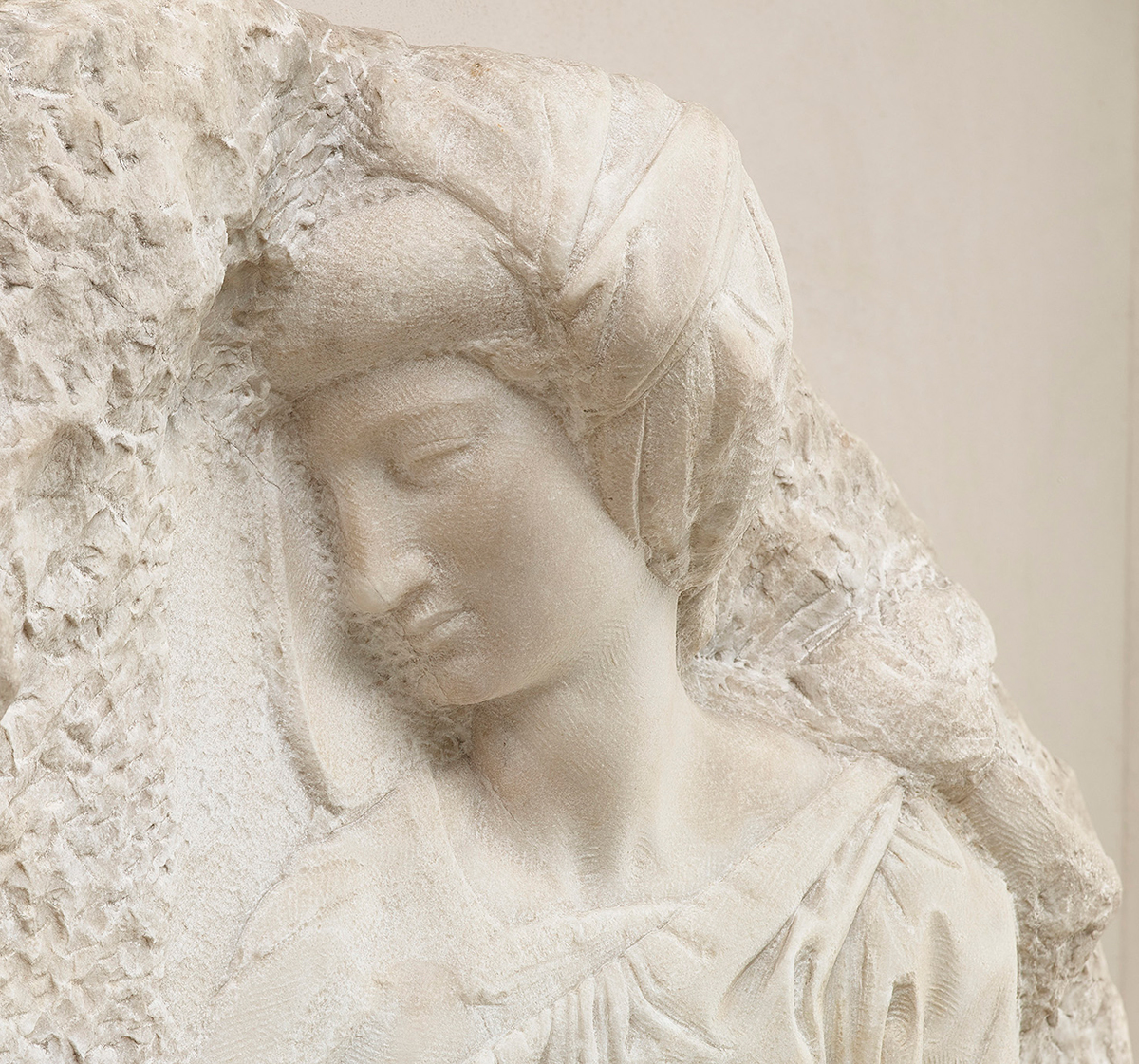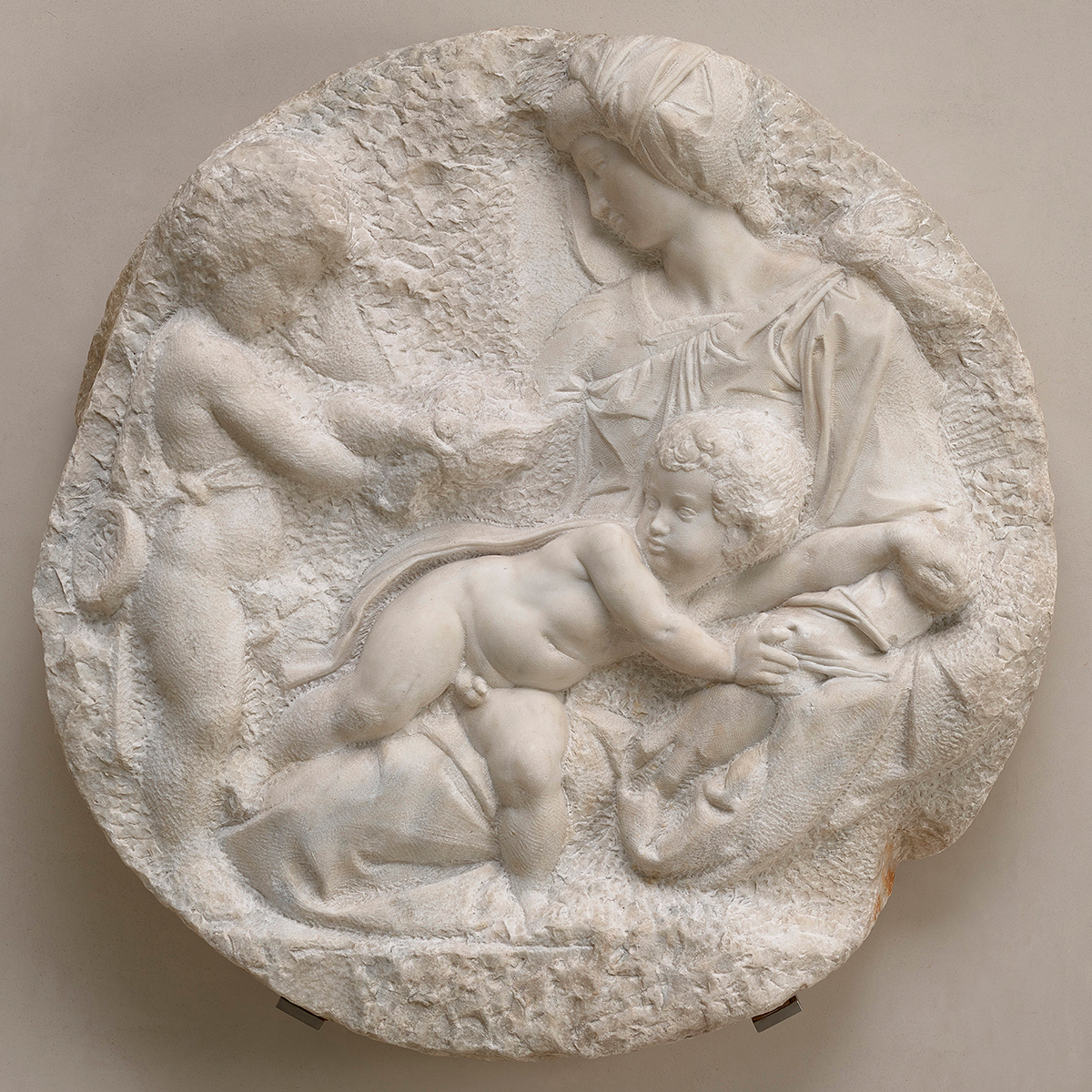
Can you spot the crack in this Michelangelo?
The Taddei Tondo features in the National Gallery's forthcoming show, despite its tiny flaw
Here's a beautiful, little-known Michelangelo marble work, to mark the Renaissance man’s birthday today, 6 March. The Virgin and Child with the Infant Saint John the Baptist, known colloqually as the Taddei Tondo, is the only marble sculpture by Michelangelo in a permanent collection in Great Britain, and will form part of the National Gallery’s forthcoming blockbuster show, Michelangelo & Sebastiano, opening 15 March.
It was created around the same time as Michelangelo’s David, for the Italian arts patron Taddeo Taddei - the work's nickname comes from Taddei's second name, and the Italian term 'tondi' for a round circular painting or carving.
While it may appear to be perfect, look out for a hairline crack along the Madonna’s face, the upshot of a stone mason’s chisel blow, struck before Michelangelo started work on the piece; you can just make this out in the top image.

Despite that tiny flaw, the Taddei Tondo remains a wonderful work, filled with symbolism. “Here, the youthful St John the Baptist, Christ’s cousin and the prophet who prepares his way, presents an object to the Christ child, perhaps a bird,” writes art historian Anthony Hughes in our Michelangelo book. “A goldfinch would be symbolic of Christ’s future Passion. In many fifteenth-century paintings, the baby Jesus is represented playing with such prefigurations of his own sacrifice in order to underscore the notion that he willing accepted his destiny.” For more on this work and many others take a look at our Michelangelo books here.